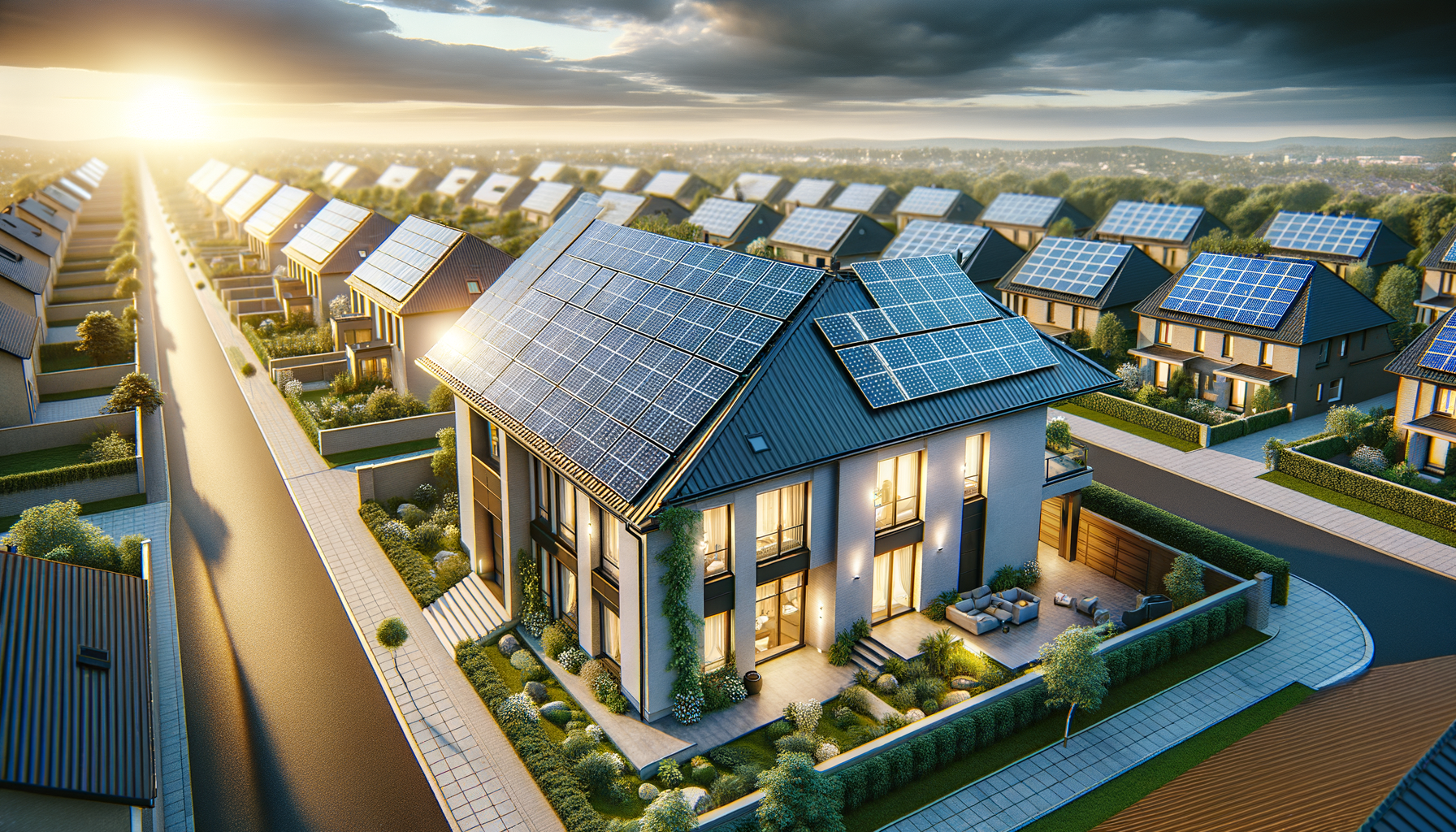The Rise of Solar Roofing Systems
In recent years, the demand for renewable energy solutions has surged, with solar roofing systems emerging as a prominent player in this green revolution. These systems integrate photovoltaic panels directly into roof structures, turning every sunbeam into a potential power source. The appeal of solar roofing lies in its dual functionality, offering both shelter and energy generation. This innovative approach not only reduces reliance on traditional energy sources but also enhances the aesthetic appeal of homes and commercial buildings.
Solar roofing systems have evolved from bulky, standalone panels to sleek, integrated designs that blend seamlessly with traditional roofing materials. This evolution is driven by advancements in photovoltaic technology, which have improved efficiency and reduced costs. As a result, more homeowners and businesses are considering solar roofs as a viable alternative to conventional energy solutions.
The environmental benefits of solar roofing are significant. By harnessing the sun’s energy, these systems reduce greenhouse gas emissions and decrease dependency on fossil fuels. Additionally, they contribute to energy independence, allowing individuals and communities to produce their own electricity. This shift towards sustainable energy sources is crucial in combating climate change and promoting a greener, more sustainable future.
Types of Solar Roofing Systems
Solar roofing systems come in various forms, each with unique characteristics and benefits. The most common types include solar shingles, solar tiles, and solar panels. Each type offers distinct advantages, catering to different aesthetic preferences and energy needs.
Solar shingles are designed to resemble traditional roofing materials, such as asphalt or slate. They are an excellent choice for homeowners who wish to maintain a conventional roof appearance while benefiting from solar energy. Solar tiles, on the other hand, are typically made from materials like glass or ceramic and offer a more modern, sleek look. These tiles are often used in new constructions or major renovations where design flexibility is a priority.
Traditional solar panels, while not as discreet as shingles or tiles, are highly efficient and can be installed on existing roofs. They are often the preferred choice for commercial buildings due to their cost-effectiveness and high energy output. Regardless of the type, solar roofing systems provide a sustainable solution that aligns with the growing demand for clean energy.
Installation and Maintenance Considerations
Installing a solar roofing system involves several critical considerations. First, the roof’s orientation and angle play a significant role in determining the system’s efficiency. Ideally, solar roofs should face south in the northern hemisphere to maximize sun exposure. Additionally, the roof must be structurally sound to support the added weight of the solar components.
Professional installation is crucial to ensure the system operates efficiently and safely. Certified installers can assess the roof’s condition, recommend suitable solar products, and handle the installation process. They also ensure that the system complies with local regulations and building codes.
Maintenance of solar roofing systems is relatively straightforward. Regular cleaning of the panels or tiles is necessary to remove dust and debris that could hinder energy absorption. Most solar systems come with warranties that cover maintenance and repairs, providing peace of mind to homeowners. By investing in proper installation and maintenance, solar roofing systems can deliver reliable, clean energy for decades.
Economic and Environmental Impact
Solar roofing systems offer significant economic benefits alongside their environmental advantages. One of the primary financial incentives is the reduction in electricity bills. By generating their own power, homeowners can significantly decrease their reliance on the grid, leading to substantial savings over time.
Moreover, many governments offer tax credits, rebates, and other incentives to encourage the adoption of solar technologies. These financial aids can offset the initial cost of installation, making solar roofing systems more accessible to a broader audience. Additionally, solar roofs can increase property value, as homes equipped with renewable energy solutions are often more attractive to potential buyers.
From an environmental perspective, solar roofing systems contribute to reducing carbon footprints and conserving natural resources. By utilizing the sun’s energy, these systems minimize the need for fossil fuel consumption, leading to cleaner air and a healthier planet. As more individuals and businesses transition to solar energy, the collective impact on the environment can be profound, supporting global efforts to combat climate change.
Future Trends in Solar Roofing
The future of solar roofing systems looks promising, with ongoing advancements in technology and design driving innovation. One emerging trend is the development of more efficient photovoltaic materials that can capture a broader spectrum of sunlight, enhancing energy output. Researchers are also exploring the integration of solar technologies with smart home systems, allowing homeowners to monitor and optimize their energy usage in real-time.
Another exciting development is the use of building-integrated photovoltaics (BIPV), which seamlessly incorporate solar cells into building materials like windows and facades. This approach not only expands the potential for solar energy generation but also offers new architectural possibilities.
As the demand for sustainable energy solutions continues to rise, solar roofing systems are poised to play a crucial role in the transition to a greener future. By embracing these innovations, individuals and communities can contribute to a more sustainable world while enjoying the benefits of clean, renewable energy.




Leave a Reply